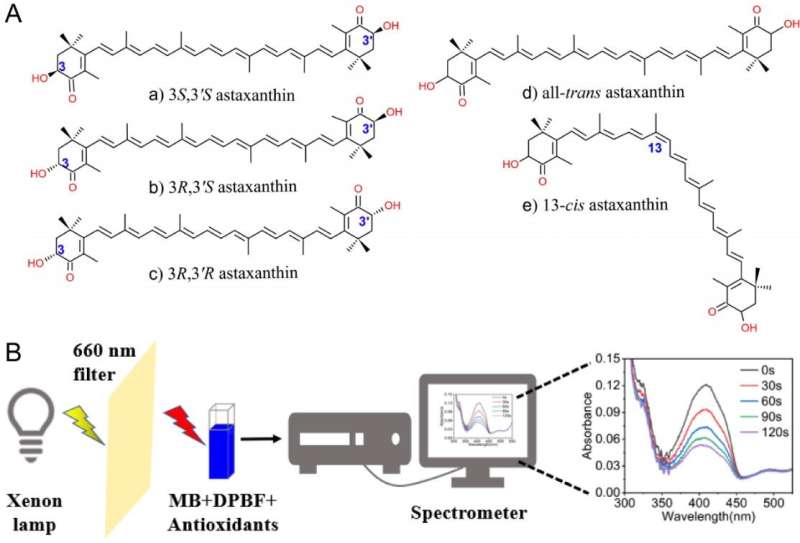Evaluating antioxidant activities of astaxanthin isomers against singlet oxygen

Researchers led by Prof. Huang Qing from the Hefei Institutes of Physical Science (HFIPS) of the Chinese Academy of Sciences have proposed a new method to evaluate the antioxidant activity of astaxanthin isomers against singlet oxygen. Results were published in Food Chemistry.
Astaxanthin has excellent antioxidant properties and is widely used in food supplements. It has many isomers and their physical and chemical properties are also different.
In this study, the researchers tried a spectroscopic method to investigate the antioxidant activity of isomers of astaxanthin against singlet oxygen (1O2), a kind of reactive oxygen species with long life and strong oxidation capacity. Previous studies on the antioxidant activity of astaxanthin did not specifically distinguish active oxygen species and generally ignored the difference in antioxidant activity of astaxanthin's isomers.
Based on previous research, they used methylene blue (MB) as a photosensitizer to generate 1O2, and probe 1, 3-diphenyliso-benzofuran (DPBF) was used to detect 1O2 in the solution. The singlet oxygen quenching capacities of astaxanthin isomers were evaluated by comparing the absorption changes of DPBF at 410 nm under different astaxanthin treatment, and the quenching constants of astaxanthin isomers were compared with that of vitamin E.
The researchers found that the singlet oxygen quenching constant of astaxanthin was three orders of magnitude different from that of vitamin E. The 1O2 quenching capacities of the optical isomers of astaxanthin were almost identical in extracellular experiments. For the cis-trans geometric isomers of astaxanthin, the 1O2 quenching capacity of cis-astaxanthin was significantly higher than that of all-trans astaxanthin.
This study offers a simple and facile spectroscopic method to assess the antioxidant activity of different forms of astaxanthin against singlet oxygen and reveals significant differences between geometric isomers, providing a new basis for practical application of astaxanthin in food industry and the development of future biological functions.
More information: Xinxin Zheng et al, Assessment of the antioxidant activities of representative optical and geometric isomers of astaxanthin against singlet oxygen in solution by a spectroscopic approach, Food Chemistry (2022). DOI: 10.1016/j.foodchem.2022.133584
Journal information: Food Chemistry
Provided by Chinese Academy of Sciences


















